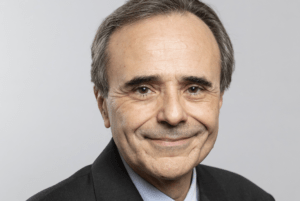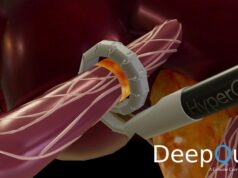
A new trial of endovascular ultrasound-based renal denervation technology has found that it reduced blood pressure in hypertensive patients at two months. The RADIANCE II study, published in The Journal of the American Medical Association (JAMA), was carried out by a team led by Michel Azizi (Université Paris Cité, Paris, France). The international, multicentre, sham-controlled randomised clinical trial was aimed at determining the procedure’s safety and efficacy “in the absence of the potentially confounding influence of antihypertensive medications”.
Azizi et al sketch out some background to the trial in their introduction, where they state that the widespread availability of pharmacotherapy for hypertension, which is at the core of existing treatment for the condition, has not prevented many patients from being inadequately treated. Endovascular renal denervation using radiofrequency or ultrasound technology for renal nerve ablation, they say, has been examined as an adjunct to pharmacotherapy and lifestyle change, but that earlier studies with the radiofrequency technology including the DENERHTN randomised controlled trial, also led by Azizi, and the Simplicity HTN3 trial reported “inconsistent results”. They also refer to the further RADIANCE-HTN SOLO trial using ultrasound renal denervation led by Azizi to place RADIANCE II in context.
RADIANCE II took place across 37 centres in the USA and 24 in Europe, enrolling a total of 1,038 patients of whom 224 met all criteria for randomisation. Of these 224, 150 were randomised to a group receiving ultrasound renal denervation and 74 to a sham procedure group. The mean age was 55 years, while 28.6% of patients were women. Antihypertensive medications were being taken by 147 patients (65.6%) at the time of their enrolment, while the rest had previously received but ceased taking them. Those patients receiving renal denervation underwent a procedure of an average length of 77 minutes, compared with 44 minutes for the sham procedure. Bilateral ablation was successfully carried out in 148 of 150 patients (98.7%), with 30 (20.0%) of these having accessory renal artery ablations.
The primary efficacy outcome of the trial was the mean change in daytime ambulatory systolic blood pressure (SBP) at two months, with patients of both groups maintained off medications except for when blood pressure exceeded a certain level. There was also a primary safety outcome which was a composite of major adverse events including “death, kidney failure, and major embolic, vascular, cardiovascular, cerebrovascular, and hypertensive events at 30 days and renal artery stenosis greater than 70% detected at six months”. There were a number of secondary outcomes—these included mean change in 24-hour ambulatory SBP, home SBP, office SBP, and all diastolic blood pressure parameters at two months”.
Turning to the results, the study authors found that ultrasound renal denervation brought a greater reduction in daytime ambulatory SBP (mean, −7.9mmHg [standard deviation (SD), 11.6mmHg]) vs. the sham procedure (mean, −1.8mmHg [SD, 9.5mmHg]; baseline-adjusted between-group difference, −6.3mmHg [95% CI, −9.3 to −3.2mmHg], p<0.001), which the study authors reported to be consistent throughout the 24-hour circadian cycle. “Among the seven secondary blood pressure outcomes,” Azizi and colleagues also reported, “six were significantly improved with ultrasound renal denervation vs. the sham procedure.”
Discussing the findings, the authors note that patients in RADIANCE II had more severe hypertension than those in RADIANCE-HTN SOLO, while they also state that “the homogeneity of the blood pressure-lowering effect of ultrasound renal denervation, independent of the method of blood pressure measurement, reinforces the strength of the results”. In further results that reflect a strong performance for denervation, SBP decrease in the ultrasound renal denervation group was found to be present “as early as one month after undergoing the procedure”. The procedure was found to be safe, with no adverse events, which was also found in the RADIANCE-HTN SOLO results.
Azizi et al pointed to several limitations of RADIANCE II. The first noted was the limited period of follow-up of two months—though plans for further follow-up are mentioned. The trial was also “limited to those at low cardiovascular risk with an estimated glomerular filtration rate (eGFR) of 40 mL/min/1.73m2 or greater and without significant comorbidities”, something that owed to the trial’s design, which required the withdrawal of blood pressure medications. Therefore, they suggest, the generalisability of the trial’s results to patients with the most severe hypertension could be limited—though its results are promising for those with hypertension which is resistant to existing treatments, as previously shown by Azizi et al in the RADIANCE TRIO trial.
The authors add too that the effects of the procedure on any given individual patient may be “difficult to predict as a result of the “variability in the prevailing state of sympathetic hyperactivity or variable renal nerve ablation”. In an editorial accompanying the study in JAMA, Clyde W Yancy (Northwestern University Feinberg School of Medicine, Chicago, USA) and colleagues say there remain questions over “patient selection, anatomic or physiologic barriers to denervation, durability of the blood pressure response, and operator or institutional requirements” which demand further investigation. Renal denervation, they say, must be one element in “a more comprehensive disease-management algorithm”.











